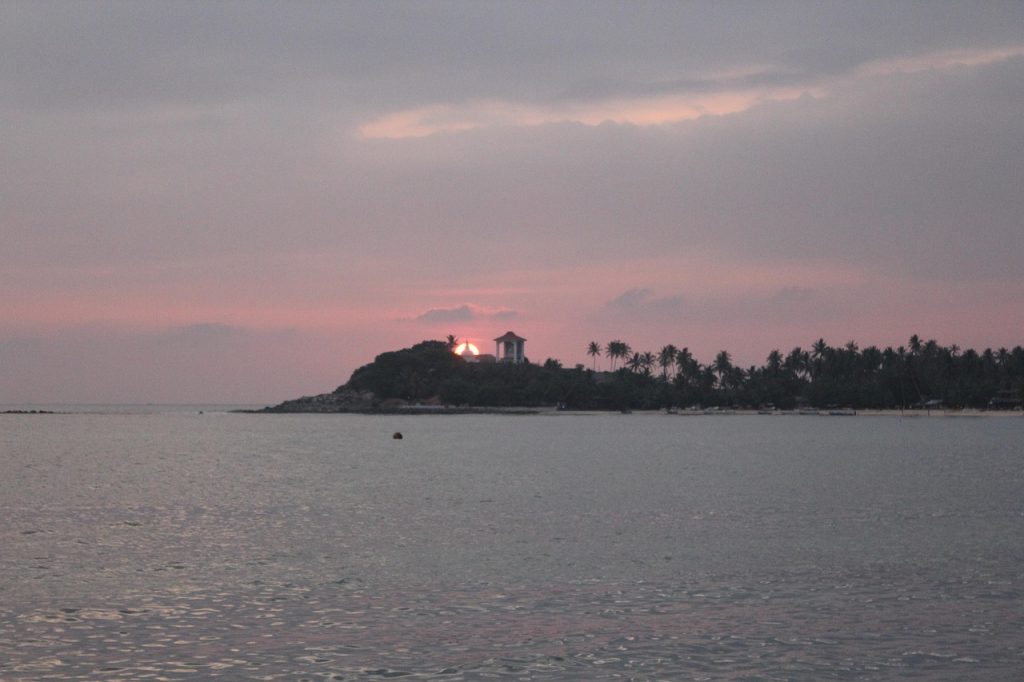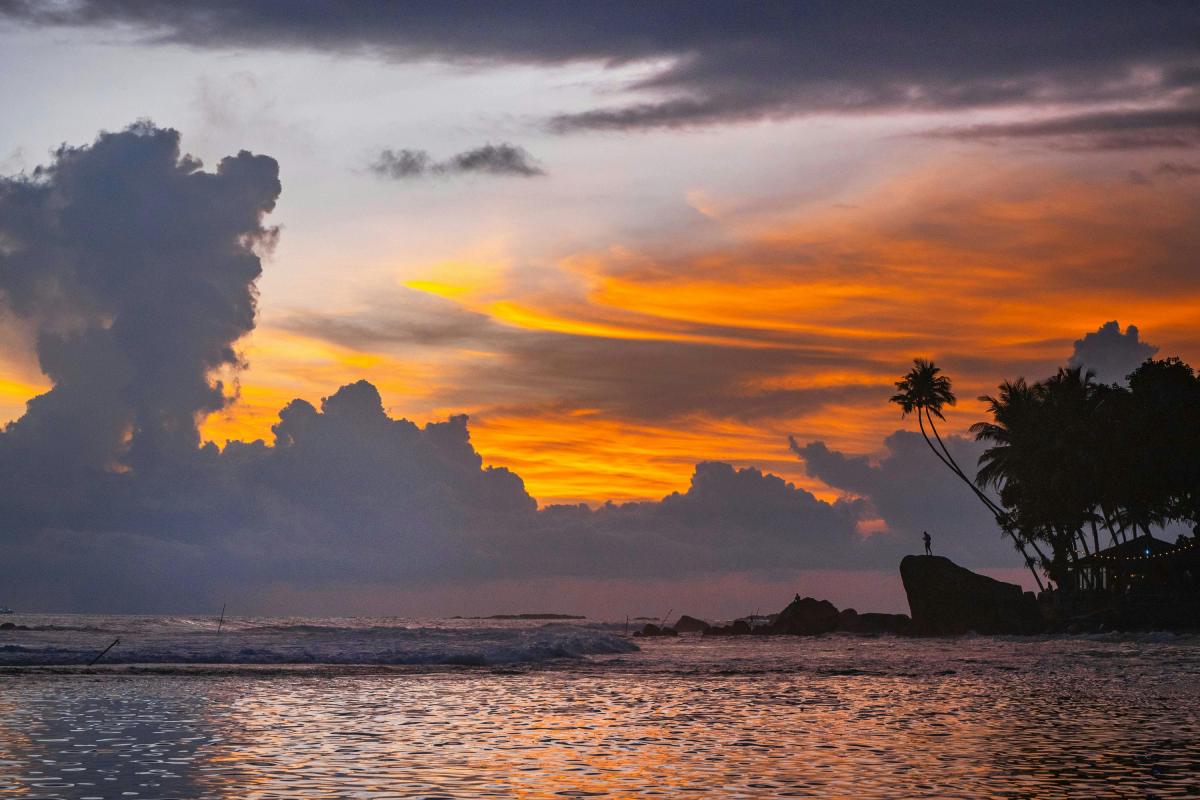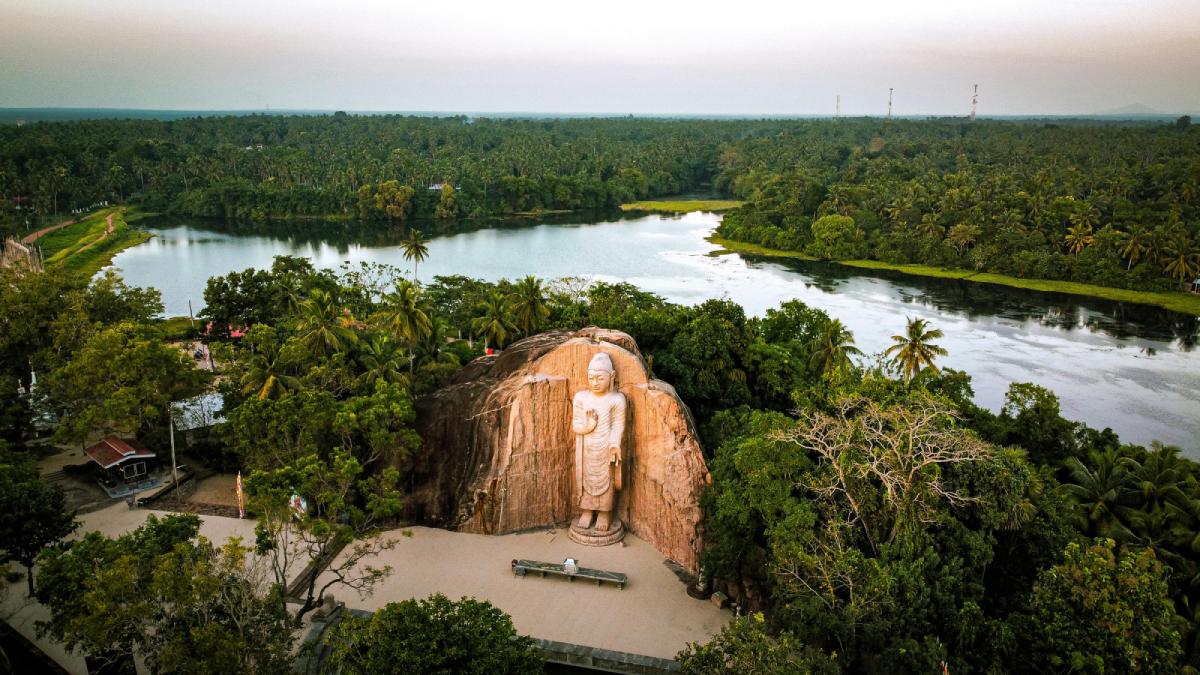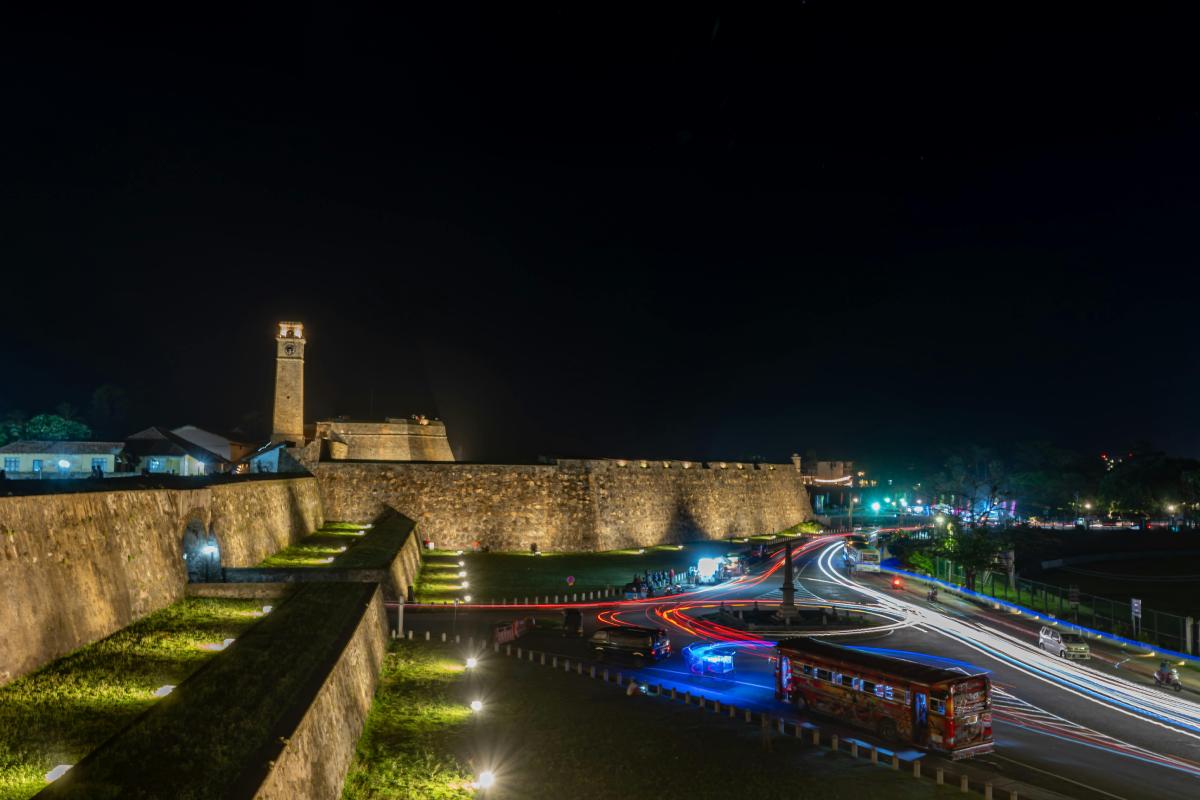Nestled along Sri Lanka‘s southern coastline, Unawatuna Beach has emerged as one of the island nation’s most beloved coastal destinations. This crescent-shaped stretch of golden sand offers visitors a perfect blend of natural beauty, cultural experiences, and adventure opportunities. From its vibrant coral reefs to its laid-back beach bars, Unawatuna provides a quintessential tropical escape that appeals to travelers from around the globe.
Location and Geography
Unawatuna Beach Complete Travel Guide. Unawatuna is located approximately 6 kilometers southeast of the historic city of Galle in Sri Lanka’s Southern Province. This horseshoe-shaped bay sits protected by headlands on both sides, creating calm swimming conditions throughout much of the year. The beach spans roughly 2 kilometers, with its soft golden sands gradually sloping into the warm waters of the Indian Ocean.
The natural bay formation provides ideal conditions for swimming and water sports, while the surrounding hills create a picturesque backdrop draped in lush tropical vegetation. Just offshore, a coral reef runs parallel to the beach, creating a natural barrier that minimizes waves and provides an exceptional environment for snorkeling and diving.
Historical Significance
Unawatuna’s history is deeply intertwined with that of nearby Galle, one of Sri Lanka’s most significant historical cities. The area has been mentioned in ancient texts, including the Ramayana, where it’s believed to be the spot where the monkey-god Hanuman dropped a piece of the Himalayas he was carrying to Lanka.
In more recent history, Unawatuna suffered significant damage during the 2004 Indian Ocean tsunami, which devastated coastal communities throughout the region. The beach and surrounding area have since undergone extensive rebuilding and development, transforming into the tourist hub it is today while maintaining much of its traditional charm.
Climate and Best Time to Visit

Unawatuna enjoys a tropical climate with warm temperatures year-round, typically ranging between 25-30°C (77-86°F). The region experiences two primary monsoon seasons:
- Southwest Monsoon (May to September): Brings heavier rainfall to the southwest coast, including Unawatuna.
- Northeast Monsoon (December to March): Generally drier and considered the prime tourist season.
The ideal time to visit Unawatuna is between December and April when the weather is consistently sunny with minimal rainfall. This period also offers optimal conditions for swimming and water activities, with calmer seas and better underwater visibility.
The shoulder seasons (April-May and September-November) can also be pleasant times to visit, with fewer crowds and potential discounts on accommodations, though with a slightly higher chance of rain.
Getting to Unawatuna
Unawatuna Beach Complete Travel Guide
By Air
The closest international airport to Unawatuna is Bandaranaike International Airport (CMB) near Colombo, approximately 150 kilometers away. From there, travelers have several options to reach Unawatuna:
By Train
The coastal railway from Colombo to Matara passes through Galle, offering a scenic and affordable journey. The trip takes approximately 2-3 hours, and trains depart regularly from Colombo Fort Station. From Galle Railway Station, tuk-tuks and taxis are readily available for the short ride to Unawatuna.
By Bus
Regular public buses operate between Colombo and Galle, with connections to Unawatuna. The journey takes around 3-4 hours, depending on traffic conditions.
By Car/Taxi
Private taxis and car rentals offer the most convenient, albeit more expensive, option. The journey from Colombo to Unawatuna via the Southern Expressway takes approximately 2 hours.
Accommodation Options
Unawatuna caters to all types of travelers with its diverse range of accommodations:
Luxury Resorts
High-end properties like Cantaloupe Aqua and Cantaloupe Levels offer premium amenities, ocean views, and upscale dining experiences. These resorts typically feature infinity pools, spa services, and private beach access.
Boutique Hotels
Numerous boutique hotels have emerged in recent years, blending traditional Sri Lankan architecture with modern comforts. Places like Thaproban Beach House and Rockside Beach Resort offer personalized service in intimate settings.
Guesthouses and Homestays
Budget-conscious travelers will find plenty of family-run guesthouses and homestays offering clean, comfortable rooms at reasonable prices. These accommodations often provide authentic local experiences and home-cooked meals.
Beach Cabanas
For those seeking the quintessential beach experience, simple cabanas right on the sand allow visitors to fall asleep to the sound of waves. While basic in amenities, they offer unparalleled proximity to the ocean.
Beach Activities and Attractions
Swimming and Sunbathing
The protected bay creates ideal swimming conditions, with gentle waves and a gradual slope into deeper waters. The golden sand beach provides ample space for sunbathing, though it can become crowded during peak season.
Snorkeling and Diving
Unawatuna’s coral reef is home to a vibrant underwater ecosystem. The clear waters offer visibility up to 20 meters, allowing snorkelers and divers to observe colorful tropical fish, sea turtles, and coral formations. Several dive shops offer equipment rental, courses, and guided excursions to nearby sites, including:
- Napoleonic Reef
- Galle Harbor Wreck
- Fish Rock
Water Sports
Adventurous visitors can enjoy a range of water sports, including:
- Jet skiing
- Banana boat rides
- Stand-up paddleboarding
- Kayaking
- Surfing (particularly at nearby Dalawella Beach)
Jungle Beach
A short hike over the headland leads to Jungle Beach, a secluded cove that offers a quieter alternative to the main beach. The 20-minute walk through lush vegetation is an experience in itself, offering glimpses of wildlife and panoramic views of the coastline.
Japanese Peace Pagoda
Perched on Rumassala Hill overlooking Unawatuna Bay, the Japanese Peace Pagoda was built by Japanese Buddhist monks in 2005. The gleaming white stupa offers breathtaking views of the coastline and serves as a place for meditation and reflection.
Culinary Experiences
Unawatuna’s food scene has evolved significantly, offering everything from traditional Sri Lankan cuisine to international favorites:
Local Cuisine
Sri Lankan seafood curries, rice and curry platters, and hoppers (bowl-shaped pancakes) are staples at local eateries. Fresh seafood, caught daily by local fishermen, features prominently on most menus.
Beachfront Dining
Numerous restaurants line the beach, offering dining experiences with toes in the sand. Places like Wijaya Beach and Happy Spice serve a mix of local and Western dishes in a relaxed atmosphere.
International Options
The area’s popularity with international travelers has led to a diverse culinary scene, with restaurants offering Italian, Mediterranean, Japanese, and fusion cuisines.
Cooking Classes
Several establishments offer cooking classes where visitors can learn to prepare traditional Sri Lankan dishes using local spices and techniques. These hands-on experiences typically include a visit to the local market to source ingredients.
Nightlife and Entertainment
While not known for wild parties like some other beach destinations, Unawatuna offers a laid-back nightlife scene:
Beach Bars
Establishments like Kingfisher and Happy Banana come alive after sunset, with fairy lights illuminating the shore and low-key music creating a relaxed atmosphere.
Cultural Performances
Some restaurants host occasional traditional dance performances and live music, offering insight into Sri Lankan cultural expressions.
Full Moon Parties
During full moon nights, certain beach venues organize special events with DJs, fire dancers, and extended hours.
Day Trips from Unawatuna
Unawatuna’s strategic location makes it an excellent base for exploring southern Sri Lanka:
Galle Fort
Just 6 kilometers away, this UNESCO World Heritage site showcases well-preserved colonial architecture within a 17th-century Dutch fort. Visitors can walk along the ramparts, explore museums, boutique shops, and enjoy cafes within the historic walls.
Whale Watching in Mirissa
A one-hour drive east leads to Mirissa, a prime location for whale watching excursions. Between November and April, blue whales and sperm whales can frequently be spotted off the coast.
Hikkaduwa Marine National Park
Located 25 kilometers northwest of Unawatuna, this protected area offers exceptional snorkeling opportunities among coral gardens teeming with marine life.
Tea Plantations
Day trips to inland tea plantations provide insight into Sri Lanka’s famous tea industry, with guided tours explaining the cultivation and processing methods.
Sustainable Tourism Initiatives
Following the devastation of the 2004 tsunami, Unawatuna has embraced sustainable tourism practices:
Coral Reef Conservation
Several organizations work on coral restoration projects, allowing visitors to participate in reef preservation activities.
Sea Turtle Conservation
The nearby Habaraduwa Sea Turtle Conservation Project rescues injured turtles and protects nesting sites. Visitors can learn about conservation efforts and even participate in baby turtle releases during the right season.
Plastic Reduction
Many establishments have implemented plastic reduction policies, offering alternatives like bamboo straws and biodegradable packaging.
Community-Based Tourism
Local initiatives connect visitors with traditional craftspeople, fishermen, and farmers, ensuring tourism benefits extend throughout the community.
Cultural Etiquette and Tips
Dress Code
While Unawatuna is a beach destination, visitors should respect local customs by dressing modestly when visiting temples or walking through villages. Cover shoulders and knees when visiting religious sites.
Religious Respect
Sri Lanka is predominantly Buddhist. When visiting temples, remove shoes and hats, and avoid pointing feet toward Buddha statues.
Photography
Always ask permission before photographing locals, particularly during religious ceremonies.
Tipping
While not mandatory, a 10% tip for good service is appreciated in restaurants and for drivers or guides.
Practical Information
Currency
The Sri Lankan Rupee (LKR) is the local currency. While some establishments accept credit cards, having cash on hand is advisable, especially for smaller vendors and tuk-tuk rides.
Language
Sinhala and Tamil are the official languages, but English is widely spoken in tourist areas, including Unawatuna.
Health and Safety
- Tap water is not recommended for drinking; stick to bottled water.
- Apply high-SPF sunscreen regularly, as the tropical sun is intense.
- Basic medical facilities are available in Unawatuna, with more comprehensive services in nearby Galle.
- The beach area is generally safe, but as with any tourist destination, be mindful of personal belongings.
Connectivity
Most accommodations and restaurants offer free Wi-Fi. Local SIM cards with data packages are affordable and easily available for those needing constant connectivity.
Conclusion
Unawatuna Beach represents the best of Sri Lanka’s coastal offerings—a harmonious blend of natural beauty, cultural richness, and modern amenities. Whether you’re seeking underwater adventures, culinary explorations, or simply the therapeutic qualities of sun, sea, and sand, this crescent-shaped paradise delivers an authentic Sri Lankan experience.
The resilience of Unawatuna and its community following natural disaster has transformed it into a thriving destination that honors its past while embracing sustainable tourism practices. As development continues, the hope remains that Unawatuna will preserve the unique charm and natural splendor that have made it one of Sri Lanka’s most treasured coastal gems.
For travelers seeking an Indian Ocean getaway that balances relaxation with experience, Unawatuna Beach stands as a testament to Sri Lanka’s enduring appeal as a tropical paradise worth discovering.


